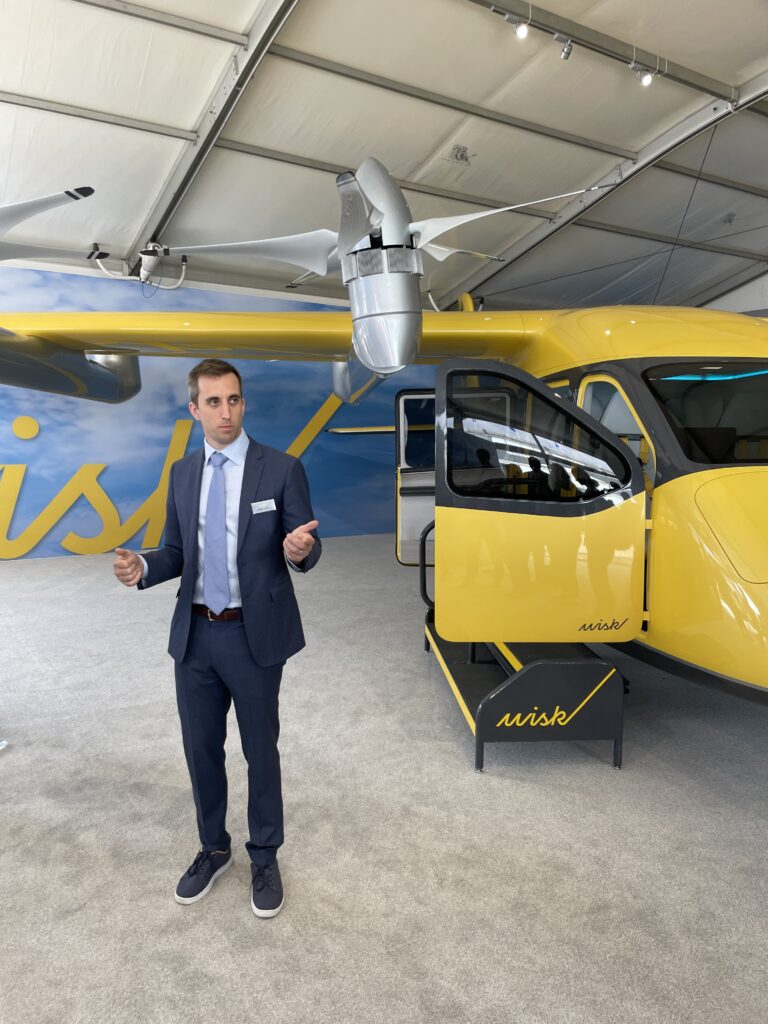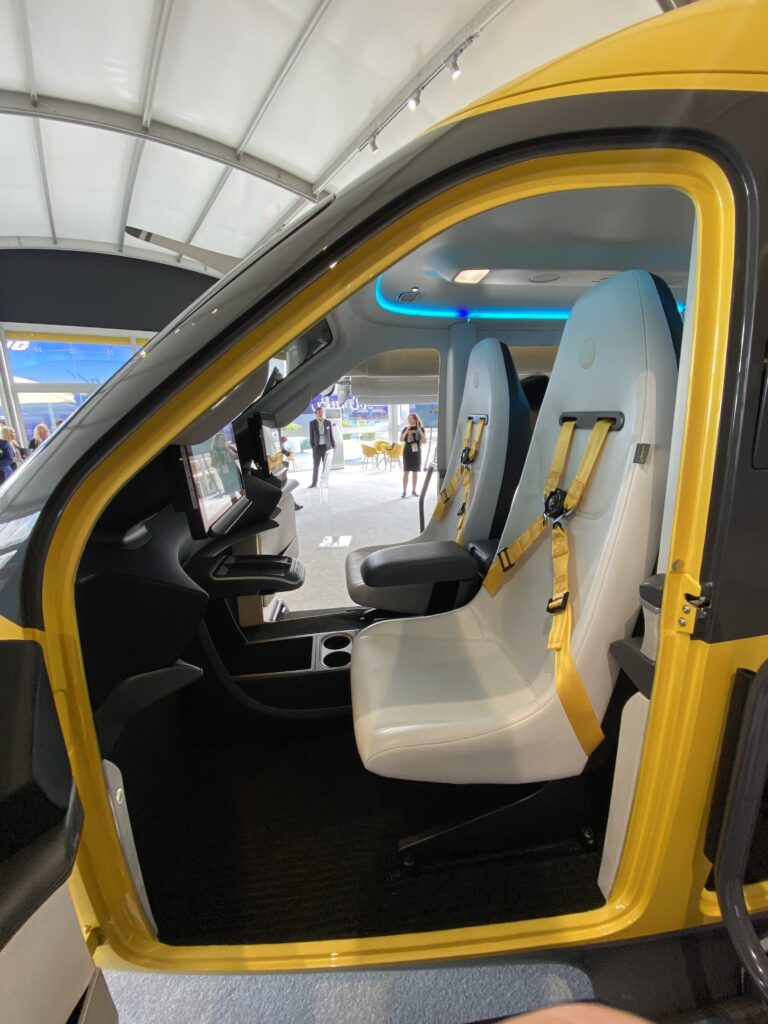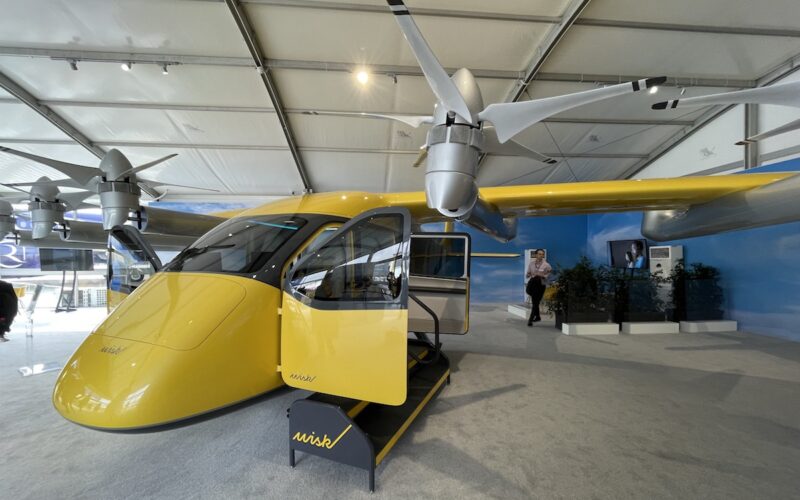It shares its sleek, modern looks with other eVTOLs on diplay at the Paris Air Show. However, there is something, other than the bright yellow color it is painted in, that sets Wisk apart from its counterparts in this nascent segment of the aviation industry: its focus on autonomous flight.
Wisk was present at the Paris Air Show with its own chalet and exhibition space adjacent Boeing’s (the American aerospace giant having confirmed the full absorption of the eVTOL developer just a few weeks earlier).
There, Wisk’s CEO, Brian Yutko, held a media briefing and Q&A session that helped clarify some of the key elements and future milestones of this project.

It was also possible to contemplate a full-scale mockup of the aircraft. Its most distinctive element was, in fact, not a feature but the absence of it. When you get close to the cabin, you can see there is no traditional cockpit or instruments panel, just seating space for the four passengers.
This is because Wisk’s eVTOL does away with the pilot, the aircraft is being designed to be fully autonomous (although it can be controlled as well via a remote link with an operator on the ground).

Speaking with media present at the event, Yutko stated that autonomy remains the goal and that he expects Wisk to achieve it and get certified before the end of this decade.
In this regard it highlighted how the aircraft has been designed primarily with safety in mind: there is plenty of redundancy built in and the aircraft is expected to be able to land always land safely.
Autonomy adds an additional, and non-trivial, layer of complexity, but Yutko explained how, compared to “traditional” aircraft, some things are simpler. For example, the testing prototype that has been used to test propulsion transition (from vertical take-off and landing to horizontal flight) has only a dozen moving parts.
But autonomy is not the only area in which Wisk has taken an approach that differentiates it from its competitors. In what looks like something straight out of Apple’s playbook, Wisk is aiming to do quite a lot in-house and vertically integrate as much as possible of its supply chain.
The recent integration with Boeing may also give Wisk an edge in some areas. The eVTOL developer, for example, will benefit from access to the aerospace giant resources and to certain technologies, such as composite materials. Boeing, in turn, will benefit from more direct access to Wisk’s know how in autonomy-control software, which can be of use in other Boeing aircraft programs, particularly in areas such as safety.
Another interesting aspect of Wisk’s approach is that, at least in the early stages, the Boeing-owned developer aims to get its own AOC and operate the aircraft it produces.
This may be a way to kick-start the roll out of autonomous flight and prove the feasibility of the concept, before other operators jump onboard. Dan Dalton, VP of Global Partnerships at Wisk and also present at the event, did not rule out selling aircraft to other operators later on, but the plan is for Wisk to be the launch operator of its own aircraft.
In any case, what transpired from this media briefing is that Wisk is fully committed to developing autonomous flight technology and there is no backup plan in case autonomy proves too hard a nut to crack within a reasonable time-frame.
“There is no Plan B” stated Yutko confidently.

